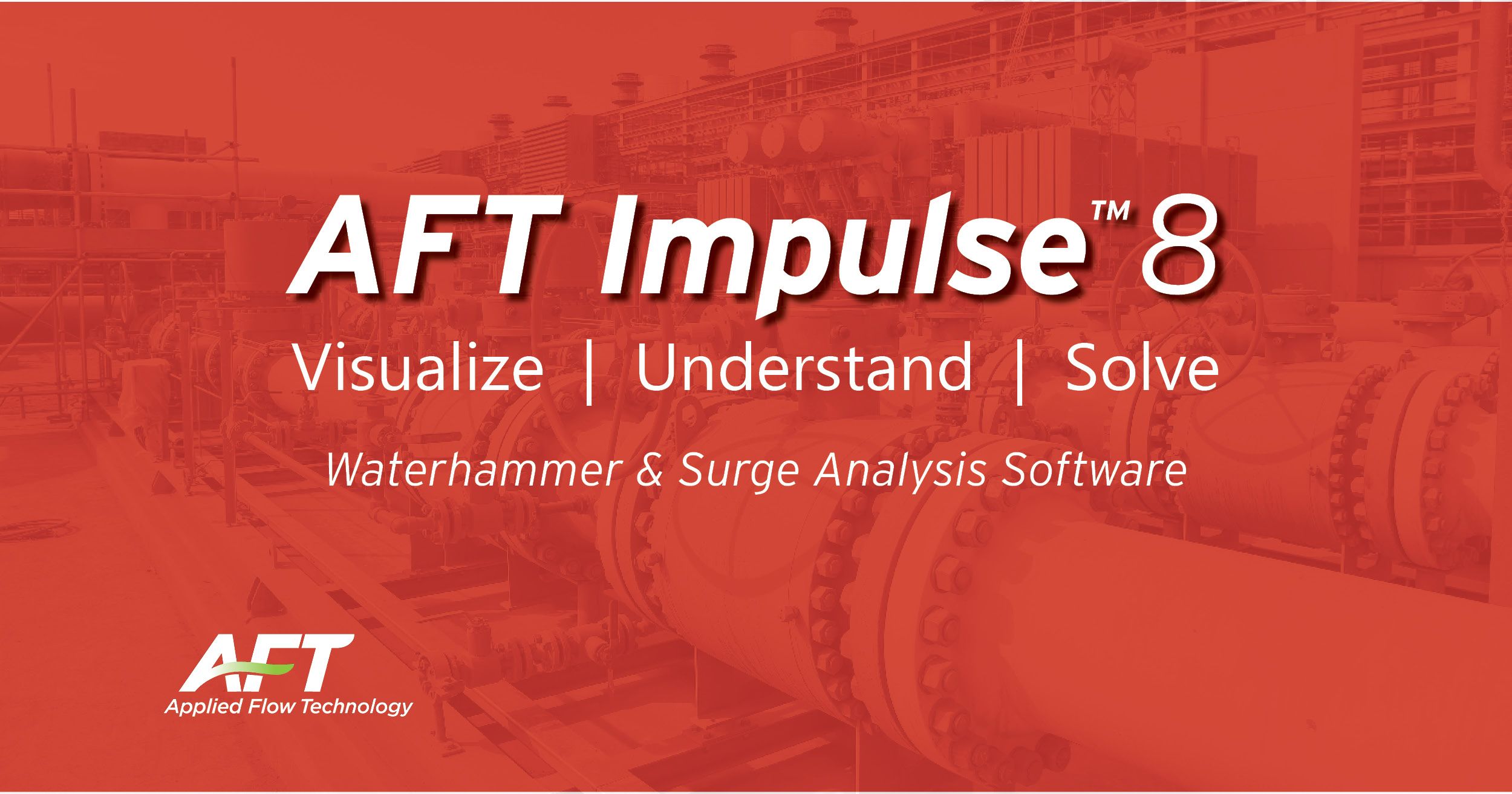
AFT Releases AFT Impulse 8 for Waterhammer Analysis
Colorado Springs, Colo., USA -- August 17, 2020 -- Applied Flow Technology (AFT) President, Trey Walters, P.E., has announced the release of AFT Impulse™ 8, the industry-leading software to simulate and analyze waterhammer in piping systems. The software was originally developed and released in November 1996 and has since grown popular with generations of engineers around the world who use the advanced tool to design safe and dependable piping systems.
“AFT Impulse was was the world’s first graphical waterhammer simulation tool for Windows. This heritage of helping engineers is again on display in AFT Impulse 8,” says Walters, “Numerous usability enhancements are offered which makes engineers better equipped than ever to tackle demanding waterhammer transient design and operational tasks.”
In total there are almost 30 new and enhanced features in AFT Impulse 8, here are the top 5 engineers will want to use:
- Multi-Scenario Comparison: Data can be compared between multiple scenarios to show changes made
- Single or multiple transient Force Sets can be defined directly from the Workspace
- Multi-level undo and redo on the Workspace
- New capability to model unsteady friction
- New pump four-quadrant curves added
- Forces can be shown on the Visual Report
Find the complete list of new features here or visit the AFT Impulse product page: https://www.aft.com/products/impulse.
Waterhammer Software
But most engineers work in older plants and will inherit the system of the original designers, and that usually comes with relief valves or vessels scattered throughout. Without modeling software, this was a common way to protect against unpredictable surges. They didn't have software to analyze wave behavior, and as a result, process design became a rough estimate to meet code.
Today, system modeling allows engineers to take their steady-state designs further to predict surge transient events and the effectiveness of mitigation efforts. Targeted pressure control makes processes safer and more efficient. But more robust mitigation efforts require more robust technology for guidance. Being able to predict the unanticipated low pressures, column separation, and subsequent high-pressure waves requires more time and calculation than most engineers care to invest.
Waterhammer software takes the pressure off the engineer by modeling the transient events, predicting expected behavior at various conditions, and checking the effectiveness of suppression methods. Even today, waterhammer analysis is not always part of the standard design process. Using the initially assumed “worst-case scenario” is often where the analysis starts and stops. Instead, take waterhammer analysis beyond the standard methods, and consider all the complex consequences of a change in flow.


